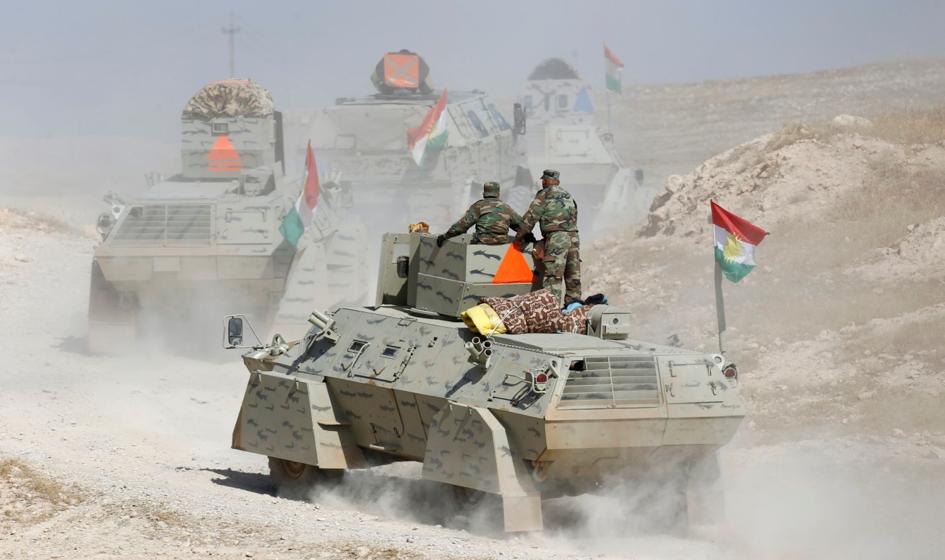- Zelensky’s alarm at the UN (Sept. 24, 2025): “We are now living through the most destructive arms race in human history, because this time it includes artificial intelligence,” he told world leaders, urging rules for AI in weapons. AP News
- BBC’s analysis echoes the warning: A recent BBC explainer shows how AI is accelerating drone warfare—navigation without GPS, target recognition, and swarm coordination—changing both tempo and tactics. YouTube
- On the ground: Ukraine and Russia are racing to add AI to drones for terminal guidance and anti‑jamming, while also reverting to low‑tech fixes like fiber‑optic tethers to beat electronic warfare (EW). CSIS
- Scale and lethality: Ukrainian commanders say drones now account for a large share of battlefield effects; one senior officer told Reuters that “over 60% of targets are now destroyed by drones.” Reuters
- Autonomy’s frontier (not quite there—yet): Analysts stress that fully autonomous killing machines remain rare; “These are not autonomous UAVs… they still need an operator to approve the target.” CSIS
- Deep‑strike proof point: June’s Ukrainian “Operation Spiderweb” used massed drones to hit multiple Russian airbases, damaging or destroying aircraft and forcing dispersal—an AI‑aided playbook now being copied. Reuters
- Sea drones get smarter: Ukraine’s upgraded Sea Baby adds AI‑assisted identification, self‑destruct, and longer range, pushing naval warfare into autonomous territory. AP News
- Kyiv’s drone push: “Full autonomy remains well out of reach,” the Kyiv Independent reports—but Ukraine is steadily “autonomizing more of its drones.” The Kyiv Independent
- Global response: The ICRC and UN are pressing for legally binding limits on autonomous weapons; Washington’s Political Declaration sets voluntary guardrails as the U.S. fields swarming concepts under Replicator. Congress.gov
- Information war, too: UN and research bodies warn AI‑driven deepfakes are accelerating disinformation around the conflict, eroding trust at scale. Reuters
Zelensky’s message: AI is supercharging the arms race
From the UN General Assembly podium, Ukrainian President Volodymyr Zelensky sharpened a debate that had simmered in policy circles for years: drones + AI = a qualitatively different arms race. “We are now living through the most destructive arms race in human history,” he said, adding that fully autonomous drones could soon attack “all by themselves.” His plea: global rules for AI in weapons—“as urgent as” nuclear governance. AP News
The speech wasn’t abstract rhetoric. It distilled what soldiers, engineers, and analysts have observed for months across Ukraine’s front: near‑autonomous navigation in GPS‑denied zones, machine‑vision target recognition, and experiments with swarming—all of which compress decision cycles and multiply strike opportunities. The BBC’s latest explainer underscores these shifts, showing how AI reduces reliance on constant human piloting and keeps drones effective even when communications are jammed. YouTube
How AI is changing the fight—tactically and technically
1) Terminal guidance and anti‑jamming
Both sides are grafting AI/ML onto drones to finish the kill chain even after links are cut by EW. CSIS documents Ukrainian drones that can lock onto pre‑identified targets in the final seconds of flight—one workaround for Russia’s intense jamming. CSIS also notes a back‑to‑the‑future twist: fiber‑optic tethers to keep control lines immune to EW for short‑range missions. CSIS
Expert view — Samuel Bendett: “These are not autonomous UAVs… they still need an operator to direct the UAV and to approve the target.” CSIS
2) Massing effects: from waves to swarms
June’s Operation Spiderweb showcased massed, coordinated drone strikes across multiple Russian airbases. Reuters confirmed U.S. estimates: as many as 20 aircraft hit, around 10 destroyed—a strategic shock that forced Russia to disperse or shelter bombers. Reuters
3) New domains: the AI sea drone
Ukraine’s state security service this week unveiled an upgraded Sea Baby with AI‑assisted identification, drone‑deployment features, and self‑destruct to avoid capture. The platform helped push parts of Russia’s Black Sea Fleet away from Crimea; now it has more range and payload, widening the maritime chessboard. AP News
4) The pace in 2025
Reuters and Kyiv sources say Ukraine is scaling AI‑assisted piloting and automated imagery screening (“computers can scan… targets that would take a human ‘dozens of hours’”). At the same time, Kyiv Independent cautions: “full autonomy remains well out of reach.” Reuters
What BBC’s analysis adds
The BBC’s explainer highlights how AI is re‑balancing the cost equation: cheap attritable drones, guided by software that shrugs off some jamming, can soak enemy defenses and still land hits. That message tracks with Ukrainian combat usage and Western think‑tank assessments: autonomy at the edges, growing machine‑vision, and swarming as the next step. YouTube
The battlefield reality check: autonomy is advancing, not absolute
Incremental autonomy—not “Terminator”—defines 2025. ISW’s assessment is blunt: the battlefield AI revolution “is not here yet.” And yet, capability creep is unmistakable, from terminal guidance to autonomous navigation and image‑based target lock. Institute for the Study of War
Expert view — Jack Watling (RUSI): Western forces need to “get out of the innovation mindset and into an industrial one,” mass‑producing dependable drones and counter‑drone systems. Royal United Services Institute
Numbers drive doctrine. Ukraine’s new Unmanned Systems Forces emphasize scale: one top commander told Reuters that drones destroy over 60% of targets in today’s fight—a figure that, even if fluxes across sectors, shows how uncrewed systems now shape the battlefield. Reuters
Case study: Russia–Ukraine moves and countermoves
- Ukrainian deep strikes: “Spiderweb” demonstrated synchronized, multi‑base attacks, forcing Russia to scatter assets and rethink airfield defenses. Reuters
- Russian adaptations: Analysts track Russia’s pivot to innovative drones and BAI‑like effects (interdicting rear areas) as Russian UAVs evolve—another push in the cat‑and‑mouse cycle. Institute for the Study of War
- EW and counter‑EW: Both sides escalate jamming and spoofing; Ukraine counters with tethered drones and AI terminal guidance to finish attacks after link loss. CSIS
Inside Ukraine’s digital kill chain: DELTA, data and AI
Ukraine’s DELTA system—a national, secure situational‑awareness and targeting network—has now been mandated across the Defense Forces. Officials and independent reports say it verifies vast numbers of strikes, coordinates unmanned platforms, and is compatible with NATO exercises. Reuters quotes Deputy PM Mykhailo Fedorov describing how AI speeds target discovery and how work continues toward swarming and greater autonomy. Reuters
Fedorov: computers can scan imagery for targets that would take a human “dozens of hours.” Reuters
Guardrails and treaties: can policy catch up?
Humanitarian law voices are getting louder. The ICRC urges legally binding rules to ban unpredictable autonomous weapons and any system designed to target people, plus strict limits on all others. The UN and its disarmament office reiterate that lethal autonomous weapons without human control are “politically unacceptable and morally repugnant.” ICRC
On the state practice side, Washington’s Political Declaration on Responsible Military Use of AI and Autonomy lays out non‑binding norms (testing, oversight, meaningful human control). Meanwhile, the Pentagon’s Replicator initiative is scaling attritable, autonomous systems informed by lessons from Ukraine. Congressional research details the aims: mass, cost‑imposition, and speed. State Department
The ICRC also warned the UN Security Council in September about AI in autonomous weapons, military decision‑making, and information ops—three risk areas demanding urgent governance. ICRC
The information front: deepfakes and AI propaganda
The UN telecom agency and multiple research groups have documented how AI‑generated multimedia (video, audio, images) is turbocharging misinformation and influence operations, a trend seen repeatedly in the Ukraine war. The effect isn’t just confusion; it can undermine evidence and accountability by seeding doubt about authentic footage. Reuters
RUSI’s recent study charts how state and non‑state actors already integrate generative AI into disinformation campaigns; the earliest viral examples included the 2022 deepfake of Zelensky calling on troops to surrender. Royal United Services Institute
Where experts agree—and where they don’t
- Consensus: AI is compressing the kill chain (find‑fix‑finish) and raising the tempo of operations, particularly through drones; autonomy is spreading at the edges (navigation, recognition, terminal guidance). CSIS
- Dispute: How close we are to “killer robots”. Kyiv’s own officials and outside analysts emphasize progress but caution full autonomy is not mainstream yet. The Kyiv Independent
- Industrial lesson: The war rewards scale and reliability. “Get… into an industrial [mindset],” says RUSI’s Jack Watling—mass, not boutique prototypes, wins. Royal United Services Institute
What to watch next (Q4 2025–2026)
- Smarter interception and counter‑drone lasers. Ukraine is testing lasers and other point‑defense options as cheap drones proliferate. Reuters
- Maritime autonomy surge. Expect more AI‑enabled sea drones for reconnaissance, mining, and precision strikes. AP News
- Policy deadlines. The UN system aims to advance binding rules on autonomous weapons by 2026—but consensus is fragile. Reuters
- Swarms move from trials to tactics. Western militaries (e.g., the U.S. under Replicator) and Ukraine will expand swarm concepts; success or failure will shape doctrine for a decade. Congress.gov
Expert voices you should know (selected quotes)
- Volodymyr Zelensky: “We are now living through the most destructive arms race in human history, because this time it includes artificial intelligence.” AP News
- Samuel Bendett (CNA/CSIS): “These are not autonomous UAVs… they still need an operator to direct the UAV and to approve the target.” CSIS
- Col. Vadym Sukharevskyi (Ukraine Unmanned Systems Forces): “Over 60% of targets are now destroyed by drones.” Reuters
- Jack Watling (RUSI): Militaries must shift from “innovation” to an industrial mindset for drones and counter‑drone systems. Royal United Services Institute
- ICRC: States should prohibit unpredictable autonomous weapons and those designed or used to apply force to persons; tightly restrict all others. ICRC
Bottom line
Zelensky’s UN warning captured a sober reality: AI is not a distant future in warfare—it is the new baseline. The BBC’s analysis and a growing stack of field evidence show AI quietly moving from lab demos to battle‑critical functions in Ukraine: navigation through jamming, machine‑vision target lock, and early swarming. The result is a faster, cheaper, more scalable form of force that favors whoever can industrialize—and govern—it first. Whether the world can codify guardrails before fully autonomous killing at scale becomes normal may decide if this arms race remains merely devastating—or truly “the most destructive” in human history. YouTube
Sources & further reading (selected)
- Zelensky’s UN speech coverage (Sept. 24, 2025): AP; Reuters. AP News
- BBC explainer: How AI could influence the future of drone warfare (video). YouTube
- Field analysis of drones, EW, and AI (CSIS; ISW). CSIS
- Ukraine’s “Spiderweb” strikes (June 2025): Reuters deep‑dives. Reuters
- Sea Baby upgrade and Black Sea impacts: AP. AP News
- Ukraine’s autonomy push & DELTA targeting: Reuters; independent reports. Reuters
- Global governance: ICRC & UN on autonomous weapons; U.S. Political Declaration; DoD Replicator overview. Congress.gov
- Deepfakes and AI propaganda risks: ITU/UN report; RUSI study. Reuters









